Are you guys searching for the best smart tv for google home, so you are in the right place? Considering Google TV is one of our favorite television operating systems, many of the greatest Google TVs are also among our finest TVs overall. While the software isn’t the only factor to consider when purchasing a new television (for more information, see our TV buying guide), it is very significant. You could argue that it’s more vital than ever before because as televisions have become smarter, the software that runs on them has become increasingly important to the overall experience. Google is used in some of the top TVs we’ve tested and evaluated.
These greatest Google TVs — and then we’ll consider the greatest Android TV smart TVs in that category — provide a plethora of apps and services, as well as some of the most advanced smart home features. Last year, Google-powered smart TVs received a substantial improvement with the switch from Android TV to Google TV.
Google TV improves the already nice smart TV platform by improving navigation, content discovery, and suggestions, as well as putting shows to watch lists and managing the TV from your phone. We already like Android TV, but Google TV is superior.
These best smart tv for google home have grown incredible, bringing a slew of technological advancements. Use your voice to access entertainment quickly, receive answers on-screen, operate smart devices, and more. To begin, press the Google Assistant button on your remote. You can quickly search and view your favorite movies, shows, music, and YouTube videos. Alternatively, you can use your voice to control your trip images on the big screen.
You may also ask Google questions and have the answers shown on your TV screen. Find out more about what you’re viewing, your favorite series, characters, and actors. Get a little assistance on your big screen with local business information, travel details, and sports scores. To control your connected smart home devices, talk to Google.
Several of the dozens of TVs we assess each year support Google TV or Android TV, but they frequently make our best TV lists because of their excellent usability and features. The best smart tv for google home we’ve tested and experienced is listed below.
The Buying Guide on Best Smart TV for Google Home:
The world of TV is updated daily, and it’s a bit confusing when you’re having a hard time choosing from the various best smart TVs for Google Home. Here are some things to consider before buying the best smart TV for Google Home.
Size of screen
Whether you’re looking for a basic TV or a high-performance TV, screen size is probably the number one factor in your decision. Think about how many people in your family are watching TV simultaneously and where to put your new device. Then select the largest screen size that meets your needs. Given the price, performance, and typical living room, today’s sweet spot is 55-65 inches.
The size of the display is also influenced by the distance between you and the television. It’s too near if you can see pixels on the screen. As a rule of thumb, the distance from the TV should be three times the screen’s height for HD and only 1.5 times the screen’s height for 4K Ultra HD. In other words, you can sit nearly twice as much as a 4K UHD TV.
You need to consider a suitable size for other parts of the house where you may need a small TV, such as a bedroom or kitchen. Select a display resolution and quality that is appropriate for your viewing distance. Unless you live in a small apartment or dorm, we start with 55 inches.
Resolution of screen
With horizontal rows and vertical columns, resolution refers to the number of pixels that make up a picture on display. The image will be crisper, and the details will be finer as the number of pixels increases. Therefore, the higher the resolution, the better.
The biggest advantage of a 4K TV is that small objects on the screen display more detailed information, such as clearer text. Overall, the images look richer and more realistic than HDTV, but subtle benefits can be.
Live TV hasn’t fully adopted 4K yet, but DirectTV, Dish Network, and Comcast Xfinity are all starting to offer 4K movies. Ultra HD devices can upscale existing HD content, but the results can be mixed and not as sharp as the original 4K programming.
Finally, affordable 8K TVs are on the market. These displays offer four times the resolution of 4K devices and significantly improve image quality. However, finding content that takes full advantage of this high resolution is very limited.
Also Read: Best TV for College Dorm
HDR
Dolby Vision is a more sophisticated version of HDR, created and licensed by the people who brought Dolby Noise Reduction and Surround Sound. The results are accurate and impressive because they contain dynamic metadata that adjust the HDR effect. Samsung has introduced a unique premium HDR format called HDR10 + on all smart TVs.
It works like Dolby Vision and provides a great viewing experience, but it’s not as common as Dolby Vision. Dolby Vision can enjoy more content if the TV supports it when it comes to content.
Finally, think about where you’re most likely to watch your content and make sure your TV supports that format and that your Bluray player also supports it. Some support both formats to guarantee the future but check first. If you buy a 4K TV, you need to get a TV that supports HDR and get the most out of that image. Buy an HDR set compatible with Dolby Vision if you want the best.
Rate of refreshing
Some new models add HighFrame Rate (HFR) support. This means providing both a higher refresh rate and additional support for content with frame rates above 60Hz. HFR content comes from both movies and live broadcasts, and HFR is undoubtedly a notable feature as it is particularly well suited for live sports.
The default refresh rate is 60 times per second, or 60Hz. However, in scenes with fast-moving objects, especially on LCD HDTVs, a refresh rate of 60Hz can cause objects to blur or shake. To produce a more stable image, the manufacturer doubled the refresh rate to 120Hz. TO GET THE SMOOTHEST IMAGE POSSIBLE, most TV buyers should not buy a TV with a refresh rate of less than 120Hz.
LCD, LED, and OLED Technology
LCD technology, called quantum dots, has become famous for Samsung’s use in QLED devices. This is a long-standing technology used by other companies such as TCL to help LCD screens produce a variety of colors. It adds another layer of different-sized nanocrystal dots that light up when the LED backlight hits them. As a result, it has a wider color gamut and increased brightness to compete with OLEDs.
OLED TVs are superior to full-array LED LCDs with dozens of lighting zones. Instead of a backlight, OLEDs use a layer of organic LEDs controlled at the pixel level to achieve absolute black and impressive contrast levels. Premium display technology is only found on 4K and 8K devices and ranges from 55 inches to over 75 inches. But OLEDs are also much more affordable.
Ratio of contrast
The best TVs have dark black levels, but cheaper displays glow dark gray even if they need to be black. These gray tones are known as “excessive black levels” and are common problems with poor-quality LCD TVs. Manufacturers’ claims about contrast ratios cannot be compared between brands and can be ignored. Instead, look for deep black levels and minimal halos around high contrast objects.
Quality of audio
Some TVs and soundbars also support Dolby Atmos. Dolby Atmos is Dolby’s new audio standard that includes overhead sounds for a more immersive listening experience. While ceiling speakers can achieve the Atmos effect, many soundbars feature Atmos audio processing and upward-firing speakers to create more realistic sounding audio that doesn’t require multiple speaker arrays.
This standard HDMI feature allows you to use HDMI as both an input and an audio output, allowing you to send audio from an external media device to your TV and your Soundbar. This ARC connection means you get great Sound on all your devices.
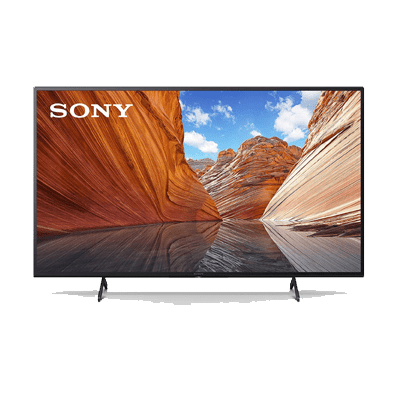
Reasons to Buy
Reasons to Avoid
The Sony X80J is Sony’s 2021 series entry-level 4k TV, the best smart tv with google assistant. It lacks many specifications found on high-end TVs but works as expected on low-IPS models. ADS panels with a low contrast ratio have a low contrast ratio, making blacks look gray in dark rooms and having no local dimming to improve the black level. That is, it has a wide viewing angle and a decent brightness. So glare is not an issue in a reasonably bright room.
The color gamut of HDR content is wide but not bright enough to bring out the highlights in HDR, limiting the overall HDR experience. The gaming features are fairly basic, with no variable refresh rate or automatic low latency mode.
The HDMI port is limited to HDMI 2.0 bandwidth, but casual gamers have faster response times and input. Like the other 2021 Sony TVs, it comes with Google TV instead of Android TV. The new interface is fast, easy to use, and offers a wide variety of streaming apps, making it the best tv for google assistant,
For mixed-use, Sony X80J is fine. It looks best in a bright room, and its wide viewing angle is ideal for wider seating arrangements. However, watching movies and games in a dark room is a shame. HDR performance is also dull due to its low contrast and lack of local dimming to improve performance in dark rooms.
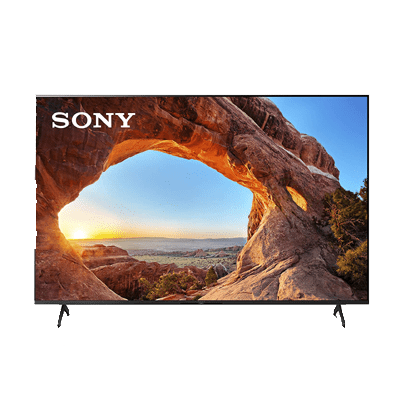
Reasons to Buy
Reasons to Avoid
The Sony X85J is Sony’s 2021 series midrange 4k TV google assistant enabled tv. This replaces the Sony X85H, which has never been released in North America. The next model we tested was the Sony X850G. Thanks to its great contrast ratio and black uniformity, it’s a great TV with great darkroom performance. It works well in bright rooms due to its excellent peak brightness and proper reflection processing. Glare is not a big issue unless there is enough natural light.
Similar to Sony TV’s Android TV interface before but runs an updated Google TV interface that is more intuitive to use. With the same wide range of streaming apps, you can find your favorite streaming service. Gamers appreciate the low input delay after firmware updates, HDMI 2.1 bandwidth, and support for variable refresh rates.
The Sony X85J is a TV suitable for most applications. Great contrast and black uniformity make it perfect for watching movies in the dark, but disappointing due to the lack of local dimming. Suitable for watching sports and TV programs during the day, it is ideal for games due to its low input delay and fast response time.
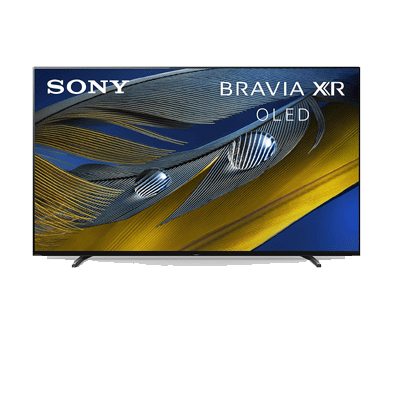
Reasons to Buy
Reasons to Avoid
Sony A80J OLED is a high-end OLED TV best tv for google home. It is located under Sony A90 JOLED in the range of Sony 2021 and has some drawbacks compared to high-end models, but even with the low peak brightness of B. HDR, it has impressive image quality, especially in dark rooms.
It will be realized. OLEDs can turn off individual pixels so they don’t bloom around bright objects, resulting in an almost infinite contrast ratio. Unfortunately, the main drawback of owning an OLED is the risk of permanent burn-in after prolonged exposure to static elements.
Comes with the new Google TV as a smart platform. This is a nearly redesigned version of Android TV with many apps to download. It features HDMI 2.1 inputs for high frame rate 4k games and variable refresh rates. The Sony A80J is excellent overall. It produces a dark black with an almost infinite contrast ratio and does not bloom around bright objects, making it ideal for watching movies in dark rooms.
HDR content looks great because of its dark black and wide color gamut, but HDR brightness is fine. It also has almost no lag in response time, making it ideal for watching sporting events. It also has an HDMI 2.1 input, making it ideal for gaming. It’s impressive to use as a PC monitor, but there is a risk of screen damage after being exposed to static elements due to burn-in.
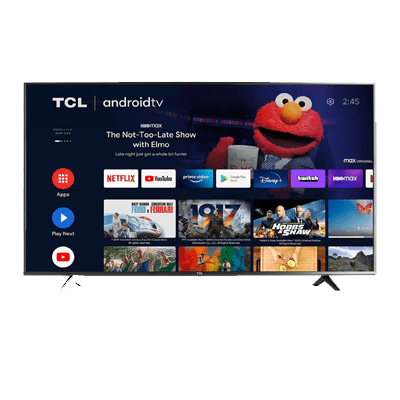
Reasons to Buy
Reasons to Avoid
The TCL4 series / S434 Android 2021 is an entry-level 4k TV. This is a variation of the 2021 TCL4 series, which runs the Android TV smart interface instead of the RokuTV smart interface normally found on previous TCL4 series TVs. The Android TV is easy to operate and has a wealth of additional streaming apps available from the built-in Google Play store. Its VA panel has an amazing contrast ratio and excellent black uniformity.
Uniform black when viewed in the dark. Unfortunately, this also narrows the viewing angle and is not suitable for large seating areas. The input lag of the game is very small, but it does not support advanced game features such as variable refresh rate support to reduce screen tearing, and the HDMI port is limited to HDMI 2.0 bandwidth.
The TCL S434 is an excellent TV overall. Enjoying a movie in a dark room is not bad because of the surprisingly high contrast ratio and excellent black uniformity. Still, there is no local dimming to improve the contrast. It is suitable for gaming due to its low input lag and reasonable response time. Still, it cannot support advanced gaming features such as variable refresh rate technology.
Also Read: Best 4k TV under 300
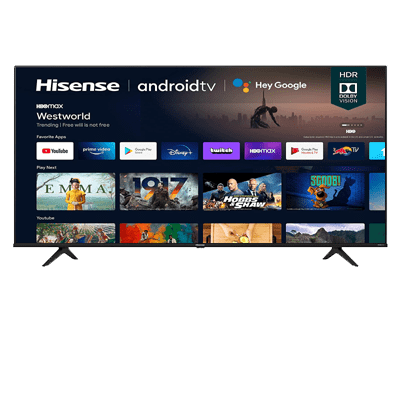
Reasons to Buy
Reasons to Avoid
Up to a point, that is. The native 4K visuals the A6G can produce have a lot of advantages, and it’s not the worst upscale of Full HD content you’ve ever seen. It’s even fast enough to be used as a gaming monitor. It’s not a particularly bright or black image, and it’s also fairly flat and two-dimensional.
It’s also not at ease upscaling appropriately lo-res content, and the less said about the sound, the better. When it comes to televisions, it’s rare to see any deviation from the conventional notion of ‘design,’ and that’s doubly true when the TV in question is priced as low as the Hisense A6G. As a result, this TV looks reassuringly like a TV, with no unnecessary design flourishes visible.
The 55A6direct G’s backlight arrangement (dubbed ‘DLED’ by Hisense) necessitates a massive chassis depth – at 74mm, the 55A6G doesn’t make a strong argument for wall-hanging. But if you prefer to put it on its simple ‘boomerang’ feet, it’s nice and tidy enough, as long as your shelf, tabletop, or whatever is broad enough – those feet are rather widely apart.
The build quality is adequate, and while the feel of the plastics from which the Hisense is largely manufactured isn’t sumptuous, there are no creaks or groans from the frame.
If you keep the price in mind, you’ll find that there’s not much to be disappointed. In terms of specifications, it’s a similar story: there’s not much about the Hisense A6setup G’s that would lead you to believe it’s designed to compete at the base level of the market.
It supports HLG, HDR10+, and Dolby Vision HDR standards, which most far more expensive 55in TVs do not, plus it offers plenty of connectivity. A quad-core processor handles overall performance, but Hisense is tight-lipped about it. It’s fast enough to achieve input lag below 20ms in ‘gaming’ mode, and it can handle a fairly extensive smart TV package, so it appears to be capable of operation.
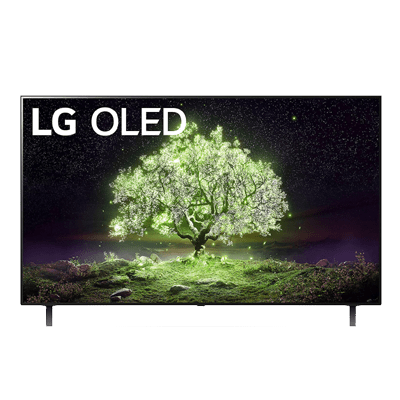
Reasons to Buy
Reasons to Avoid
With a built-in Google Assistant, Automation 4K processor, Dolby Cinema, and other interesting features, the LG OLED A1 Series 55″ Series is one of the greatest TVs. This TV’s 4K Ultra HD display provides viewers exceptional brightness, contrast, color, and clarity. Your content will come to life in over 8 million pixels on this TV. These pixels switch on and off for excellent color contrasts and an outstanding viewing experience.
Its 9 Gen 4 AI processor recognizes genres and scenes to deliver the best possible entertainment. The TV includes built-in access to Netflix, Prime Video, Disney+, Fire TV, and LG channels. Its outstanding picture and audio mode elevates the home cinema experience to a new level. The game optimizer tool gives players quick access to all game parameters, including the low latency option, which helps HGiG keep game lags to a minimum.
Google Assistant and Alexa are built-in to the television, making it easy to retrieve information and connect smart devices at home. It also succeeds at the fundamentals – excellent contrast, colors are rich and diverse, viewing angles are great, and upscaling is handled nicely.
Thanks to amazing Acoustic Audio+ technology, which produces sound directly from the display, the sound is likewise great. In contrast, it requires a little more tinkering to look its best; it’s fine out of the box, but you’ll want to experiment with different modes to get the most out of it.
For various reasons, the LG OLED A1 Series 55 is highly ranked and evaluated on the market. The visual quality is excellent, as it is with all OLED 4K TVs. It also has Google Assistant AI technology built-in and Alexa compatibility. NVIDIA G-Sync compatibility improves overall picture quality and visuals for video games while ensuring smooth performance for PC gamers.
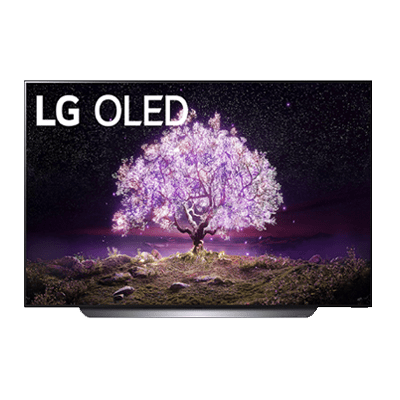
Reasons to Buy
Reasons to Avoid
The LG C1 OLED follows LG’s tradition of producing some of the greatest televisions available. That supremacy is built on OLED technology, the greatest TV display technology on the market for some years.
However, our LG C1 OLED review demonstrates how LG has improved to provide a fantastic 4K smart TV with sophisticated features, a smart platform that supports a wide range of popular apps and unique capabilities, and a deep (and increasing) gaming feature set.
The LG C1 OLED is less expensive than the luxury LG G1 OLED and more capable than the low-cost LG A1 OLED, which drew much attention over Black Friday. As a result, we have one of the greatest OLED TVs we’ve ever seen. The LG C1 OLED is one of the best TVs on the market, with superb performance, many welcome updates to the feature set and interface, and some of the best future-proofing of any 4K smart TV.
LG’s OLED TVs come in a wider range of sizes than ever before, and the C1 OLED offers the complete spectrum of 4K OLED options. From a small 48-inch model to a massive 83-inch set that will be far too huge for most houses but ideal for a big home theatre.
The quality of the UHD display was brought home by watching a few 4K samples. Aerial views of the Italian coast revealed jagged cliffs and tiny windowed buildings, all of which appeared to be miniatures, complete with little cars on the roads and boats drifting in the sea.
The ocean’s turquoise waves were brilliant, the green foliage was luxuriant, and the cliffside structures were all stunning. Another 4K video of Manhattan drone footage showed us clearly, detailed images of the Statue of Liberty and several locations in and around Manhattan.
Blue skies appeared to be blue, vividly colored buildings gleamed realistically at night, and images of the Brooklyn Bridge had realistically detailed brickwork and high-tension wires. Everything appeared to be in excellent condition.
Also Read: Best TV for Video Wall
Conclusion
We are fortunate to be living in a technologically advanced era. Not only do the majority of current TVs offer amazing 4K quality, but many of them now include Google Assistant. Following a considerable investigation, evaluation, and testing, I have given you the best guide on the best smart tv for google home.
